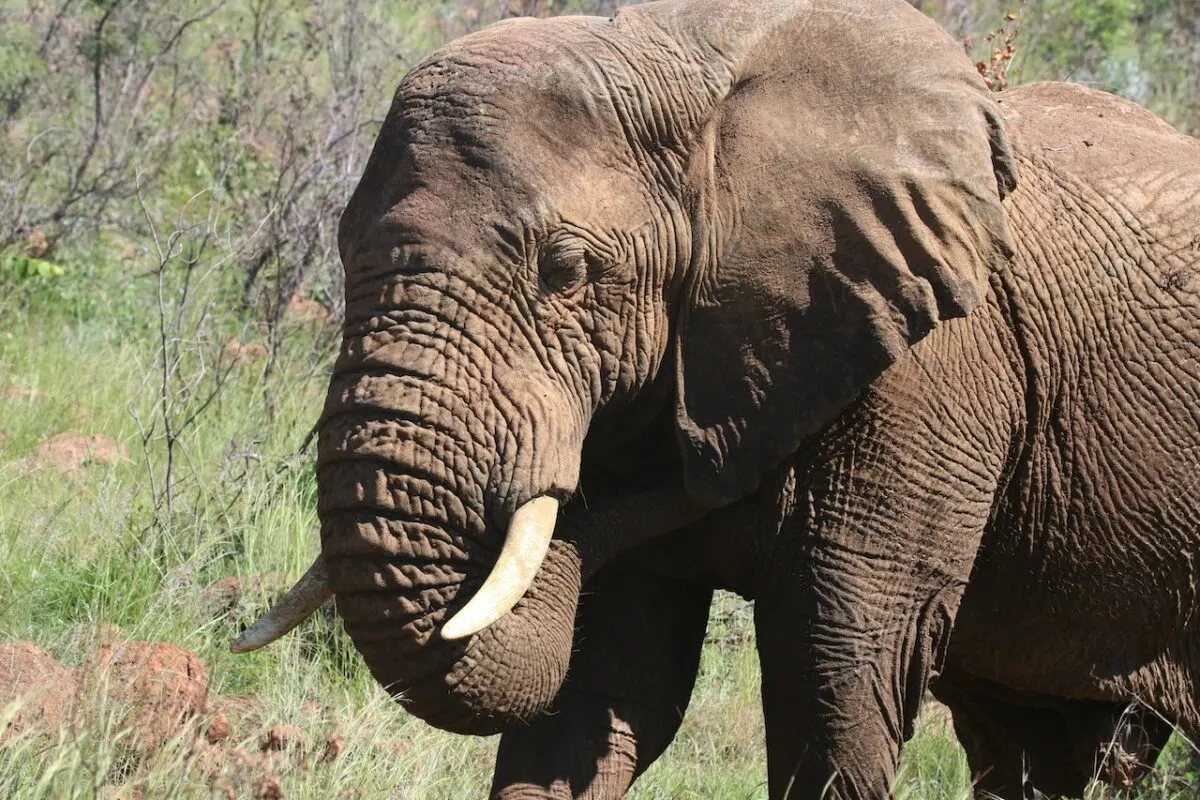From the arid deserts of Africa to those of Central Asia, two of the world’s most fascinating animals stand out: the African elephant and the Bactrian camel. Despite living in vastly different habitats, these two mammals share some similarities but exhibit stark differences in physical and behavioral traits.
Here, we’ll talk about these magnificent animals and compare their size, habitat, diet, social behavior, and other survival skills so you can learn more.
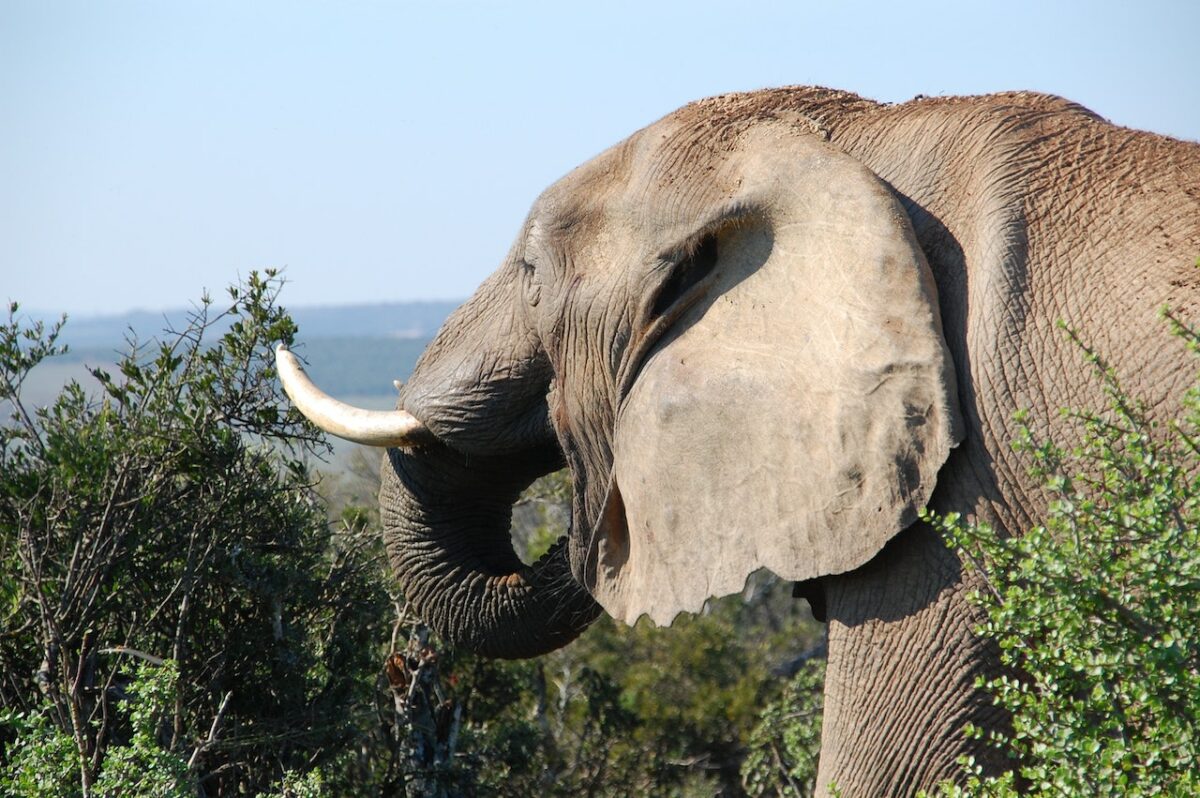
Want to jump ahead? Click below
Table of Comparison:
| African Elephants | Bactrian Camels | |
|---|---|---|
| Size and Weight | The largest land animal, with males weighing up to 12,000 lbs and standing up to 13 feet tall at the shoulder | Much smaller than African elephants, with males weighing up to 2,200 lbs and standing up to 7 feet tall at the shoulder |
| Habitat and Distribution | Native to sub-Saharan Africa and can thrive in diverse environments such as savannas, forests, and even deserts | Found in the deserts of Central Asia, particularly in Mongolia and China |
| Diet and Feeding Habits | Consumes a diverse range of plant material such as grasses, leaves, fruits, and barkHerbivore | Feeding on tough desert vegetation including shrubs, thorny plants, and even snowHerbivore |
| Social Behavior and Communication | Highly social animals, living in groups led by a matriarchal elephant and communicating through various vocalizations, touch, and body language | Usually live in smaller groups or pairs, and communicate through a variety of sounds including grunts, moans, and groans |
| Reproduction and Life Cycle | Females give birth to one calf after a 22 month gestation period, and the calf stays with the mother for several years. | Females birth a single calf after a 13 months gestation period, and the calf is weaned within 1 to 1.5 years. |
| Adaptations and Survival Skills | Have several adaptations for survival, including long trunks for feeding and communication, large ears for cooling, and thick skin for protection | Have several adaptations for survival, including thick fur for insulation, two layers of eyelashes to keep sand out of their eyes, and the ability to go without water for long periods of time |
Note: These characteristics are generalizations and may vary depending on each animal’s specific subspecies and population.
African Elephant vs. Bactrian Camel: Comparison
African Elephants
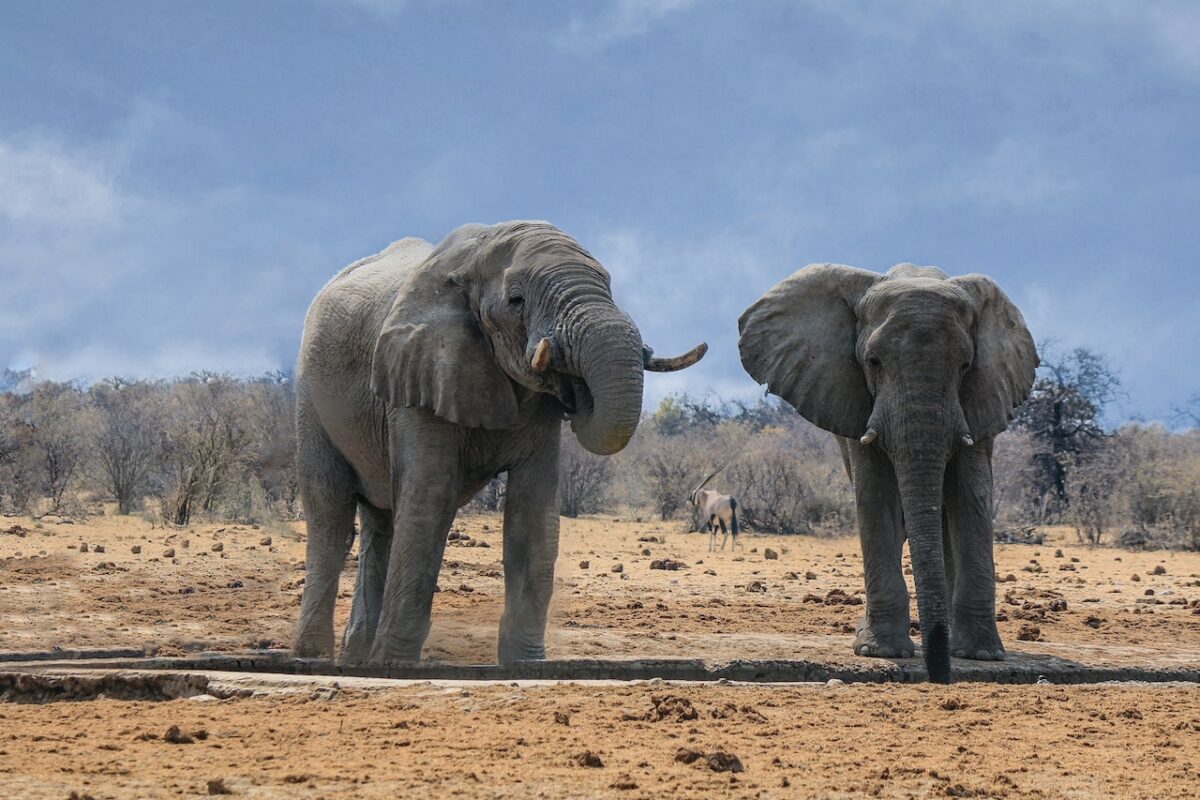
Physical Characteristics
African elephants are the largest land animal on Earth, with males weighing up to 12,000 lbs and rising 13 ft tall. They stand pretty distinctive with gray skin, long trunks, and large ears that they use to cool themselves. Moreover, their tusks are elongated incisors for digging, lifting, and fighting.
Habitat and Distribution
African elephants can be found in a multitude of environments throughout sub-Saharan Africa. They can be found in 37 countries in Africa, with the largest populations in Botswana, Tanzania, and Zimbabwe.
Diet and Feeding Habits
African elephants can consume up to 300 pounds of vegetation in a single day and are known to knock down trees to access their leaves and bark.
Social Behavior and Communication
The elephants are incredibly social, living in groups led by a matriarchal elephant. They communicate through various vocalizations, touch, and body language. Their trumpeting calls can be heard from several miles away.
Reproduction and Life Cycle
After a gestation period of 22 months, female African elephants give birth to a single calf, which stays with the mother for several years. With some of them living up to 70, these animals can have a pretty long life in the wild.
Adaptations and Survival Skills
African elephants have several adaptations for survival, including long trunks for feeding and communication, large ears for cooling, and thick skin for protection. They are also known for their intelligence and memory and have been observed using tools and displaying empathy toward other elephants.
Bactrian Camels
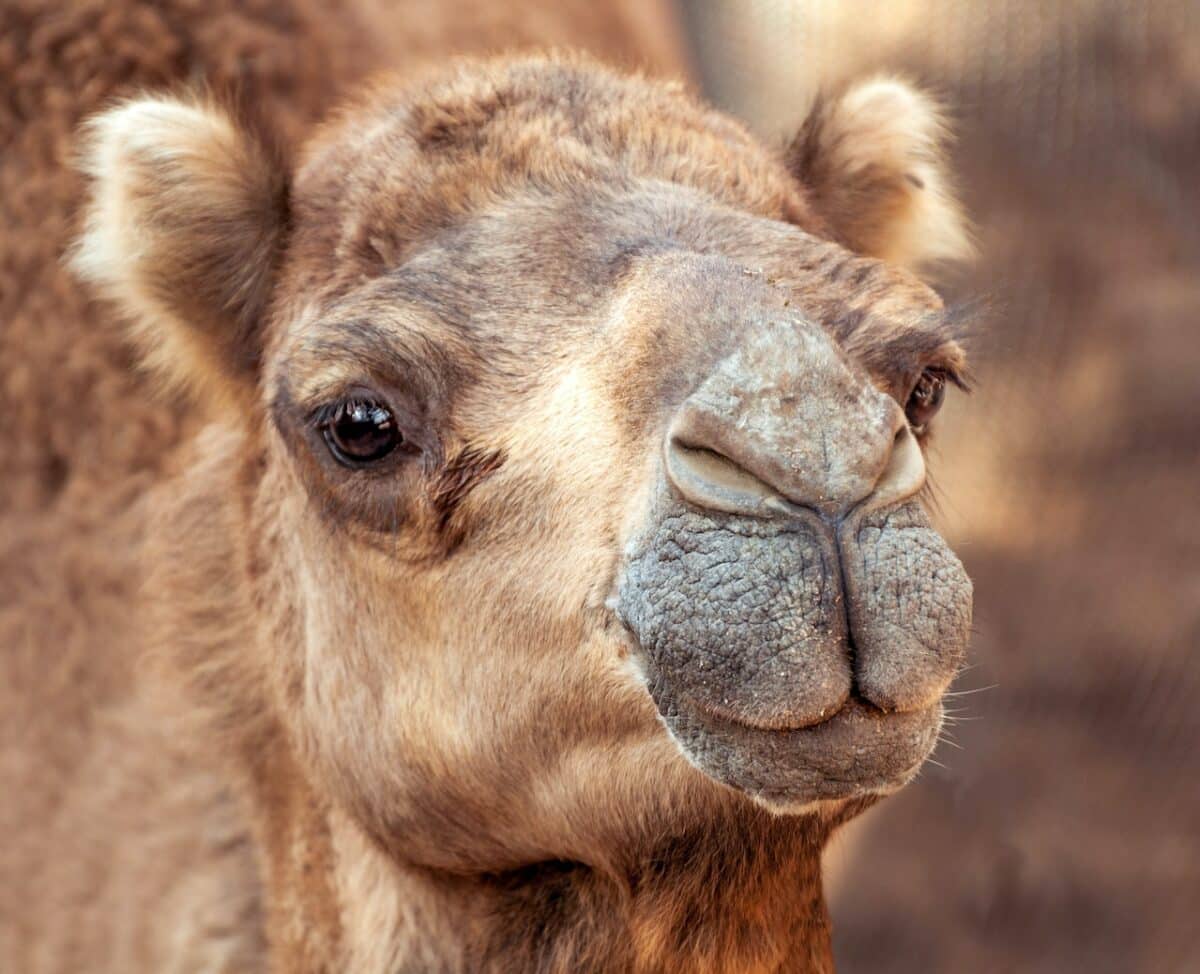
Physical Characteristics
Bactrian camels are much smaller than African elephants, with males weighing up to 2,200 lbs and standing up to 7 ft tall at the shoulder.
They have two humps on their back that store fat, which they use as energy when they can’t eat or drink. They also have long eyelashes and nostrils that they can close to keep sand out of their noses and eyes.
Habitat and Distribution
Bactrian camels are found in the deserts of Central Asia, particularly in Mongolia and China. They have remarkable adaptability to survive in extreme conditions, including temperatures varying from Negative 20°C to 40°C.
Diet and Feeding Habits
Bactrian camels are herbivorous, feeding on tough desert vegetation, including shrubs, thorny plants, and snow. They can survive without eating or drinking for multiple days and overcome dehydration problems by extracting moisture from plants and snow.
Social Behavior and Communication
Bactrian camels usually live in smaller groups or pairs and communicate through various sounds, including grunts, moans, and whistles.
These animals also employ body language, expressing through actions like standing tall to assert dominance or lying down to show submission.
Reproduction and Life Cycle
After a gestation period of approximately 13 months, female Bactrian camels give birth to a single calf that can stand and walk within an hour. The baby remains with the mother only for a few years before setting out on its own.
As for their life cycle, Bactrian camels live up to a period of around 40 to 50 natural years when bred in the wild.
Adaptations and Survival Skills
Bactrian camels have several adaptations for survival in harsh desert environments. They can tolerate extreme temperatures and conserve water by producing dry feces and reabsorbing moisture from their urine.
They also have broad, cushioned feet to traverse sandy terrain without sinking. Also, their thick fur coat helps warm their bodies in colder locations.
Interesting Facts
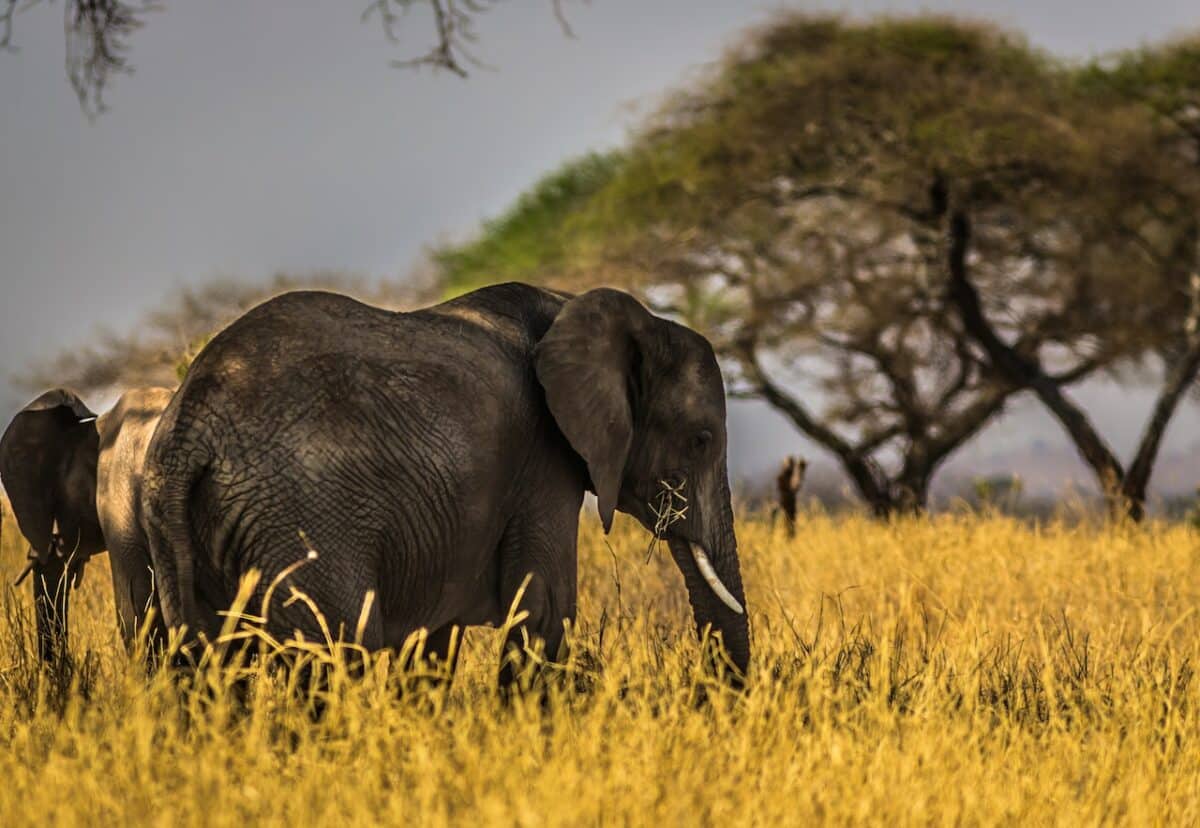
Both African elephants and Bactrian camels have captivated the human imagination for centuries. There are many fascinating facts about these incredible animals that you might not know. Here are just a few:
- African elephants lay claim to the title of “Largest Land Animal”.
- One distinguishing feature of Bactrian camels is their possession of two humps. Unlike their close relatives, the dromedary camels, who only have one.
- African elephants are known for their remarkable memory. They can remember and recognize other elephants they have encountered, even after extended periods.
- Bactrian camels are incredibly strong and can carry up to 1,000 pounds of cargo on their backs.
- Elephants are capable of complex emotions. They have been observed mourning their dead and even showing empathy toward other animals in distress.
To know more, check out additional resources on African elephants and Bactrian camels.
Key Points

| African elephants are the largest land animals on Earth, while Bactrian camels are adapted to the harsh desert environment of Central Asia. |
| Learning more about these fantastic animals and supporting conservation efforts can help ensure they thrive for generations. |
| Conservation efforts are crucial to protecting these incredible animals and their habitats, and supporting organizations like the African Wildlife Foundation and the World Wildlife Fund can make a difference. |
| Learning more about these fantastic animals and supporting conservation efforts can help them thrive for generations. |
| African elephants and Bactrian camels are essential to their ecosystems and play vital roles in maintaining the balance of nature. |
Wrapping Up with African Elephants vs. Bactrian Camels
African elephants and Bactrian camels are two amazing animals. They have adapted to their unique habitats in different parts of the world. While they have many differences in physical appearance, behavior, and survival skills, animals are equally important to their ecosystems.
By supporting conservation efforts and learning more about these animals, we can help ensure they continue to thrive.
Thanks for following along with me! I hope you enjoyed reading about these two exciting animals. Next are Gorilla vs. Elk, Gorilla vs. Crocodile, and Gorilla vs. Coyote.
Join our Forum for free today!

- Big Cats Love Mouthing Affection - July 22, 2024
- Kind Elephant Merciful To Lion Cubs - July 22, 2024
- Beachgoers Save Massive Shark Stranded In Florida - July 22, 2024

